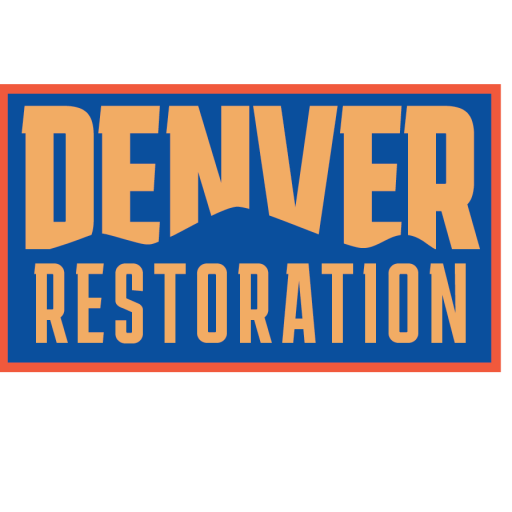The Importance of Damage Assessment
Storms and natural disasters ravage communities indiscriminately, leaving a trail of destruction and despair. But amidst this chaos, there’s a beacon of hope – the process of community restoration. At the heart of this process is damage assessment, a crucial step that helps to understand the extent of the damage and chart out the course of recovery.
Damage assessment is not just about calculating losses; it’s about building resilience. It’s the path to turning things around, from a community in crisis to one that’s thriving.
Decoding the Process of Damage Assessment
Damage assessment is a systematic method used to determine the extent of destruction caused by a calamity, such as storm damage. This includes evaluating structural damage to homes and businesses, damage to public infrastructure, and even environmental harm.
Here’s how the stages of a typical damage assessment unfold:
– Initial Evaluation: The first step is to assess the overall impact of the disaster, to ascertain immediate needs for safety, shelter, and essential services.
– Comprehensive Damage Assessment: A more detailed analysis follows, where every affected site is examined for specific damages. This forms an integral part of the restoration services we offer.
– Cost Estimation: The next piece of the puzzle is to estimate repair costs, aiming at the most effective use of resources.
– Development of a Restoration Plan: These findings are then used to formulate a comprehensive restoration plan that targets pressing issues first and ensures steady progress towards complete recovery.
Why Damage Assessment is Essential
Damage assessment provides a clear, objective picture of the disaster’s impact and the steps needed for damage recovery. A thorough damage assessment:
– Facilitates immediate response: By identifying urgent needs, it allows for swift action to secure safety and necessary support.
– Provides guidance for restoration: Each disaster is different and thus requires a tailored approach for effective restoration. A detailed damage assessment forms the road map to recovery, guiding the allocation of resources and restoration activities.
– Helps in securing funds and resources: Recovery often involves substantial costs. A comprehensive damage assessment is evidence that can be presented to insurance companies, relief agencies, and other funding sources, ensuring necessary financial support.
Damage Assessment and Community Restoration – The Connection
Community restoration after a significant storm or disaster is more than just repairing physical structures. It’s about re-establishing a sense of belonging, returning to normalcy, and rebuilding a thriving community. Damage assessment plays a pivotal role in these endeavors. It jumpstarts the recovery phase and keeps it on course.
Storm damage can be overwhelming, but with a systematic damage assessment, it doesn’t have to be paralyzing. Information is power, and by understanding the extent and details of the damage caused, we can unlock the door to recovery and move forward towards successful community restoration.
As we tackle the storm damage and embark on the path of restoration, it’s essential to remember that the process requires patience, determination, and collaboration. It’s about reclaiming homes and neighborhoods, yes, but it’s also about strengthening community bonds and becoming more resilient in the face of adversity.
Remember, community restoration isn’t just a physical process, but an emotional one. It’s about restoring the sense of belonging that is intrinsic to any community’s fabric. It’s about healing together as a community, supporting each other in the process, and emerging stronger.
In this journey of restoration, we are not alone. There are many helpful resources and agencies ready to provide support and expertise. With the right guidance and the collective strength of the community, we can rise above the aftermath of any storm. Together we recover, together we thrive.
Resilience and Recovery: Restoration Beyond Damage
The road to recovery is often paved not just with practical repair work, but also with the resilience and unity of community members. By pooling resources, efforts, and expertise, a hurricane-stricken community for instance, can quickly bounce back and even emerge stronger than before. Restoration is, ultimately, a combined endeavor, transcending beyond the mere repairing of physical damages, and venturing into the realm of psychological and social recuperation.
Fire and Water Damage Restoration Techniques
In a disaster-hit community, properties can suffer from both fire and water damage. In the case of fire damage, the restoration process involves essential procedures like soot and smoke residue removal, structural stabilization, odor control, and coping with water damage as an aftereffect of firefighting efforts.
For water damage, the process may entail water extraction, dehumidification, sanitization, restoration of tainted drywall and carpet, and prevention of mold propagation. A reliable storm restoration company like ours is equipped with state-of-the-art cleaning equipment and restoration technologies that ensure efficient post-disaster recovery.
Moreover, our team of experts is trained in damage estimation and assessment, essential stages which are key in the development of a comprehensive restoration plan.
Be Environmental, Be Safe
Another essential consideration in the post-disaster recovery process is the issue of environmental safety. After a flood, for example, there might be hazardous objects or materials like sharp debris, petrochemicals, raw sewage, and other possible contaminants lurking in the water. Thus, complying with environmental and health safety regulations for storm recovery is not just crucial—it’s a must.
Furthermore, this dedication to environmental safety is particularly critical when dealing with the cleanup of potential mold-infested areas – a common aftermath of water disasters.
The Role of Insurance and Compliance in Restoration
Beyond health and safety, recovering from fire and water damage quickly and effectively often involves negotiating with insurance companies to cover the costs of restoration.
Our damage assessment process generates a comprehensive, itemized list of damages and associated repair costs, serving as substantial documentation for insurance purposes. This detailed assessment can help speed up storm damage claims and ensure clients receive fair and necessary financial assistance.
Engaging with Community through Communication
In the aftermath of a disaster, effective and empathetic communication becomes the bedrock for building trust with clients and for fostering community spirit. Providing clients with timely updates about the damage assessment, cost estimation, and the restoration plan boosts trust.
Additionally, keeping the community informed about storm recovery updates, safety precautions, and ways to seek help can help alleviate stress and anxiety.
Engaging with the community also raises awareness about our services and capabilities, making clients feel at ease knowing they are in capable, caring hands.
Crisis Management – An Integral Element of Restoration
A disaster situation can quickly spiral into a full-blown crisis, hence, efficient crisis management begins with understanding the community’s needs and potential challenges in the aftermath of a disaster. Through effective crisis management, we can help communities traverse the difficult journey of restoring normality in the aftermath of destructive events.
Restoration, therefore, is not just about repairing physical damage but also involves assisting communities in navigating recovery – mending their sense of security, building their resilience, and helping them bounce back stronger than ever.
Preparing for a Resilient Future
As we consider restoration amidst the ravage, we must not forget that prevention is better than cure. With climate change looming, investing in resilient infrastructure and improving preparedness against potential disasters must be a collective priority.
Through initiatives like compliant building codes, construction standards, and zoning laws, we can proactively mitigate damage and ensure a more resilient and sustainable future.
To end, the monumental task of damage restoration is not a solitary endeavor, rather, it is a collective effort of various stakeholders. From the initial damage assessment and cost estimation to navigating the legalities of insurance claims and crafting a comprehensive recovery plan, every single step matters. Each contributes toward charting a course towards normalcy and beyond—to a stronger, prosperous, and resilient community.

